Gunsmiths of Western Europe of the XVI century
The workshops were scattered throughout many of the trade and economic centers of Western Europe: the largest of them were Milan, Augsburg, Nuremberg, Solingen, Toledo, and others. Usually they were located where the conditions for production were most favorable. These conditions were: timber for coal, water for driving hammers and polishing wheels, and, of course, proximity to suppliers of iron and steel. Also very important were the trade arteries - water and land routes for the transport of raw materials and finished products. And, of course, it was impossible to do without customers, and customers, preferably permanent. Considerable income brought orders of the court and chivalry. However, government orders for mass production weapons and armor for the troops were much more important for the economic development of the workshops.
The workshops that existed at that time supplied military equipment, weapons and armor for entire armies, especially during the numerous wars of the era. Differences in the manufacture of armor and weapons for the nobility and for the soldiers were fundamentally small (except for engraving and decoration), but still combining both processes (piece work and mass production) "under the same roof" was not easy.
It should be noted that the armor of famous masters could cost very large money, sometimes whole fortunes. As an example, we can cite one entry from the expenditure book of the Spanish court for 1550: "Colman, the Augsburg armored man - 2000 ducats at the expense of 3000 for the made armor" [Etat de dpenses de la maison de don Philippe d'Autruche (1549-1551) // Gazettedes Beaux & Arts. 1869. Vol. 1. P. 86-87]. Ducat in 3,5th century Spain - a gold coin weighing approximately 3000 g, i.e. 10 ducats in terms of weight is just over 200 kg of fine gold. And, for example, good armor for the tournament of the Augsburg master of the XVI century. Anton Peffenhauser cost no less than 300-6 thalers, while ordinary mass armor for an ordinary soldier cost no more than 10-29,23 thalers. Thaler (or Reichstaler) in the Holy Roman Empire of the 1566th century. - a silver coin weighing 300 g (since 8,8), i.e. XNUMX thalers in terms of weight is approximately XNUMX kg of silver.
Becoming a master was not easy at all. In each of the cities listed above, there were a number of large, unspecialized workshops owned by well-known families engaged in the production of weapons. There was constant competition between them, while the manufacturers of weapons and armor were obliged to strictly comply with the requirements of the charter of the city guilds of gunsmiths. The guild carried out not only regular checks of product quality before the sale, but also continued control over how students and apprentices were trained. The guild guild appointed a special commission (several of the best masters from different families) to monitor product quality. She stamped the city on those parts of the armor that were tested. Therefore, most of the armor and weapons of the time are 2 brand - the city and the master.
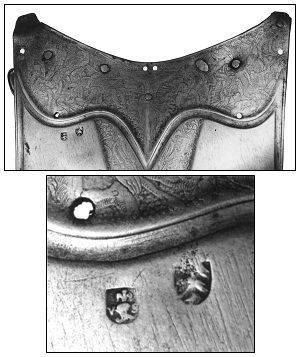
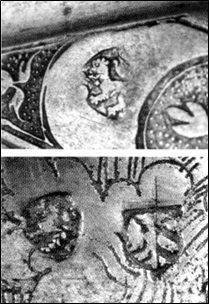
Sometimes masters inserted their initials into the ornament when decorating armor (as a rule, in a prominent place).
The guild was an influential structure, and the masters obeyed the established rules. But not all and not always. There were masters who did not want to take them into account. For example, the Nuremberg master Anton Poffengauser, known for his graceful and highly artistic armor, did not have time to complete a large state order by the deadline. And then he began, through intermediaries, to buy ready-made armor from other masters and to kill on them the stigma. It was not a crime, but contrary to the statute of the guild. This became known. But the master had so much weight in society that the guild couldn’t punish him with all the desire.
Pupils had to learn how to make armor from start to finish. Education took, for example, in Augsburg or Nuremberg, four years, and then they worked as much again, but as hired apprentices, and only then became skilled craftsmen. Examined them annually and issued with a license to manufacture a certain part of the armor. The training was long and expensive, so most students finished their training, learning to do only two or three parts, which led to a narrow specialization. The number of students and apprentices of a particular master was limited. For example, in Nuremberg, shop foremen were allowed to have only two apprentices, and from 1507 their number was allowed to increase to four and one student.
As a result of workshop restrictions, workshops that were very small and specialized had to cooperate with each other. However, it was often not a temporary partnership, but rather a permanent one. Marriages among families engaged in armaments and the dynastic inheritance of workshops were commonplace. The experience of working together led to the cohesion of workshops and the defense of common shop interests. In addition, the specialization of labor also contributed to mass production, so the armor was made relatively quickly - it took no more than 2,5-3 months to make good full armor without decorations. For the manufacture of expensive engraved could take half a year.
Engraving, as a rule, was done by other craftsmen who specialized in this, who themselves developed the design or worked according to the customer-approved master. But this type of decoration was quite rare and very expensive. Much more widespread technique in the XVI century. was acid etching. As a rule, this work was also performed not by a master armor.
In the last quarter of the XVI century. Northern Italy has become one of the producers of exquisite decorated armor, distinguished by highly artistic engraving, made in the style of rich Italian fabrics (Italian. I motivi a tessuto). Such armor, made using the technique of blackening and gilding, was covered with patterns that resembled the best textile designs. Palm branches, military fittings, trophies with elements of weapons were skillfully combined with engraved ornaments, images of allegorical figures and mythological characters of antiquity, emblems and mottos.
One of the largest European masters of protective weapons was the outstanding Milan gunsmith Pompeo della Chiesa or Chieze (Italian: Pompeo della Cesa). His customers included influential representatives of the nobility: Spanish King Philip II of Habsburg, Duke of Parma and Piacenza Alexandro Fernese, Mantuan Duke of Vincenzo I Gonzaga, Grand Duke of Tuscan, Francesco I Medici, Prince Bishop of Salzburg Wolf Dietrich von Reitena, and I’m using a place on the screen; a lot others. The armor made by him can never be confused with the work of other masters.
It is not known where and when he was born, there is no exact data on the years of his activity. The first documentary mention of the master Pompeo della Chiesa dates back to 1571 and is contained in a preserved letter from one of his customers - Duke Emmanuel Philibert of Savoy. According to some reports, since 1593, Pompeo, already an elderly man, did not work on orders himself, but still controlled the work of his workshop, in which his students worked [Fliegel St. Arms & Armor: The Cleveland Museum of Art. Harry N Abrams, 1999. P. 94.].
The gunsmith’s workshop was not located in the city itself, but in the residence of the Dukes of Milan - the Sforza Castle (Italian: Castello Sforzesco), which undoubtedly spoke of the high status of the master. The castle has survived to the present day and is considered the prototype of some architectural forms of the Moscow Kremlin.
The master signed his monogrammed POMPEO, POMPE or POMP. As a rule, this monogram fit into a cartouche with some image or coat of arms on one of the central parts of the armor (for example, cuirass). On some late armor, instead of a monogram, there is a stamp of Maestro dal Castello Sforzesco (in the form of a three-tower castle), i.e. masters from Sforza Castle, where else, at least from the beginning of the XIV century. there was an armory.
Currently, there are about three dozen armor made by Pompeo della Chiesa, preserved in whole or in part. Weaponsmen B. Thomas and O. Gamkber identified and described twenty-four armor pieces by Pompeo [Thomas B., Camber O. L'arte milanese dell'armatura // Storia di Milano. Milano, 1958.T. XI. P. 697-841]. Plus 6 more in various collections, including one partially preserved in Russia (Militaryhistorical Museum of Artillery, Engineering and Signal Corps in St. Petersburg).
The largest centers for the production of protective weapons in the Middle Ages and in earlier Modern times were the South German cities of Augsburg and Nuremberg. Among the Augsburg gunsmiths, a special place is occupied by the Kolman family (German: Colman), which received the nickname Helmschmidt (German Helmschmidt; literally “blacksmith smiths”).
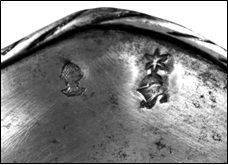
The family business was founded by Georg Kolman (d. 1495 / 1496). He was succeeded by his son Lorenz Kolman (1450 / 1451-1516), he worked for Emperor Frederick III, and 1491 was appointed court armor of Emperor Maximilian I. , which in different combinations formed armor with various functions: for war or tournament, for horse fight or foot combat. In 1480, Lorenz participated in the development of the famous elegant style, which later received the name “maximilian” from experts [Idem. Helmschmied Lorenz // Neue Deutsche Biographie. Bd. 1490. S. 8].
His son, Koloman Kolman (1470 / 1471-1532), along with the rest of the family, took the surname Helmschmidt. Despite the fact that Maximilian's grandson, Emperor Charles V, repeatedly invited Koloman to work in Spain, numerous orders that he was bombarded in his homeland prevented the gunsmith from leaving Augsburg. In 1525, Koloman seemed to thrive because he bought a house from the widow of the engraver, Thomas Burgmire. The geography of its clientele stretched to Italy. In 1511, he wrote a letter to Marquis Francesca Mantuan in which he shared his thoughts on creating horse armor that would cover the horse’s head, body, and legs.
Products bearing the stamp of Koloman Kolman or attributed to him on the basis of documentary evidence can be seen in the museums of Vienna, Madrid, Dresden and the Wallace Collection.
The largest number of surviving armor of these gunsmiths are made by Desiderius Helmschmidt (1513-1578). In 1532, he inherited the workshops in Augsburg, which his father shared with the Burgmire family. At first, Desiderius worked with the gunsmith Lutzenberger, who married Desiderius' stepmother in 1545. In 1550, he became a member of the city council of Augsburg, and in 1556, as court gunsmith of Charles V. Subsequently, he served in the same post with Emperor Maximilian II .
One of the most famous armor of his work is in the Real Armería Museum in Madrid - this is a magnificent parade armor made of Damascus steel, made for Philip II, which is signed and dated by 1550 (the same armor for which 3000 ducats paid for Desiderius from the Spanish treasury) .
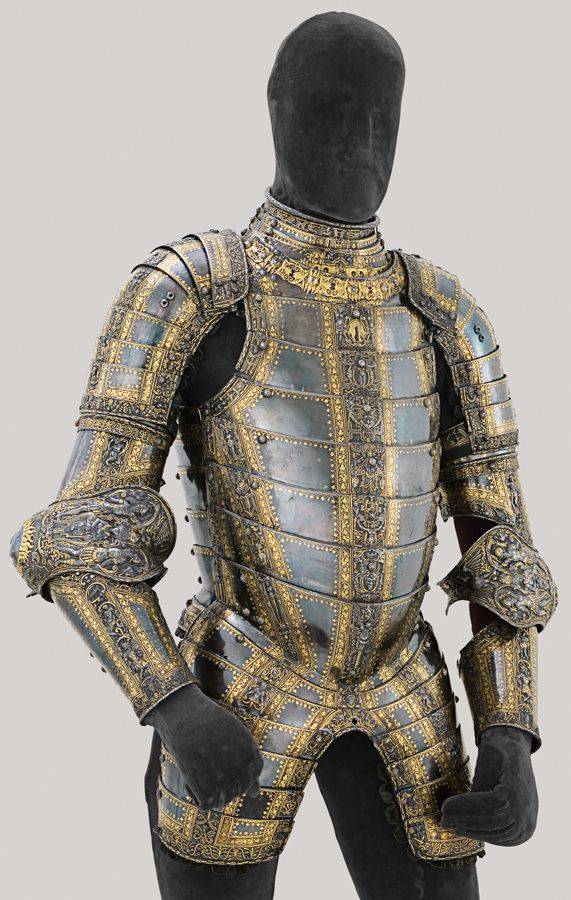
Another Augsburg master Anton Peffengauser (him. Anton Peffenhauser, 1525-1603) was one of the best masters of the late Renaissance. He worked for more than 50 years (from 1545 to 1603). Compared with his other contemporaries, the most of his armor has reached us [Reitzenstein FA von. Anton Peffenhauser, Last of the Great Armorers // Arms and Armor Annual. Vol. 1. Digest Books, Inc., Northfield, Illinois. 1973. P. 72-77.].
Anton Peffenhauser worked in the city of Augsburg - the old German center for the production of armor, weapons, jewelry and luxury items. With 1582, Mr. Anton Peffengauser began working in the Saxon court. For the electors of Augustus, Christian I and Christian II, he completed the 32 armor, of which eighteen were preserved in the Dresden meeting. In addition, the master was ordered by the Portuguese king Sebastian I, the Spanish king Philip II, the Bavarian duke Wilhelm V, the duke of Saxe-Altenburg, Frederick William I, and others.
In terms of style, the Poffengauser armor ranges from richly decorated to very simple. His stamp is one of the most famous relief armor, according to legend, belonged to the Portuguese king Sebastian I (1554-1578) who died in the battle of El-Ksar-El-Kebir in Morocco. Currently, the armor is kept in the Royal Armory in Madrid.
The stamp of the master Pefengauser is the so-called triskelion (Greek: three-legged). This sign in the form of three running legs (in Pöffinghauser’s legs are bound in greaves and sabatons), emerging from a single point, was an ancient symbol of infinity.
One of the twelve tournament half-armor, which was ordered as a gift to the Saxon Elector Christian I, his wife Sofia of Brandenburg from the Hohenzollern family. The armor is made of oxidized steel, decorated with metal etching and coated with gold. Etched pattern consists of large floral patterns, curled from the central trunk, with etched lines and with a gilded pattern of leaves inside.
Now his armor is in the collections of the State Hermitage Museum, in the museums of Vienna, Dresden, Madrid, New York, the Armory, the Tower of London, the German National Museum in Nuremberg, in the arms collection of the Coburg Castle and in the Detroit Institute of the Arts collection.
Source: S.V. Yefimov. Cold beauty. The armor of the great European gunsmiths of the XVI century in the collection of the Military Historical Museum of Artillery, engineering troops and communications troops.
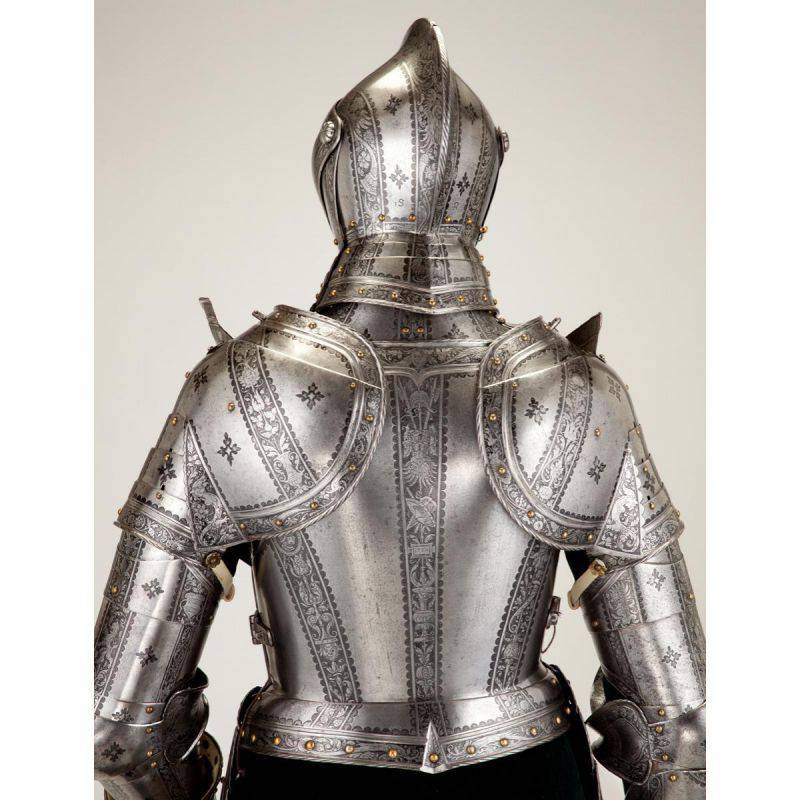
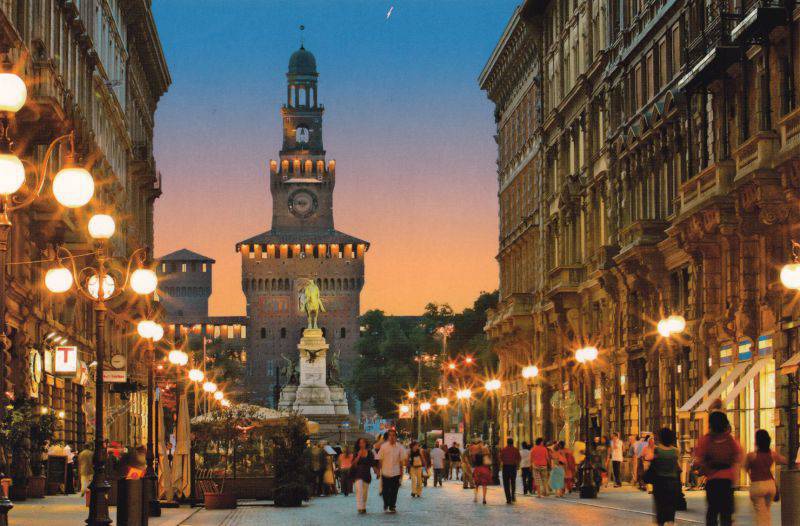
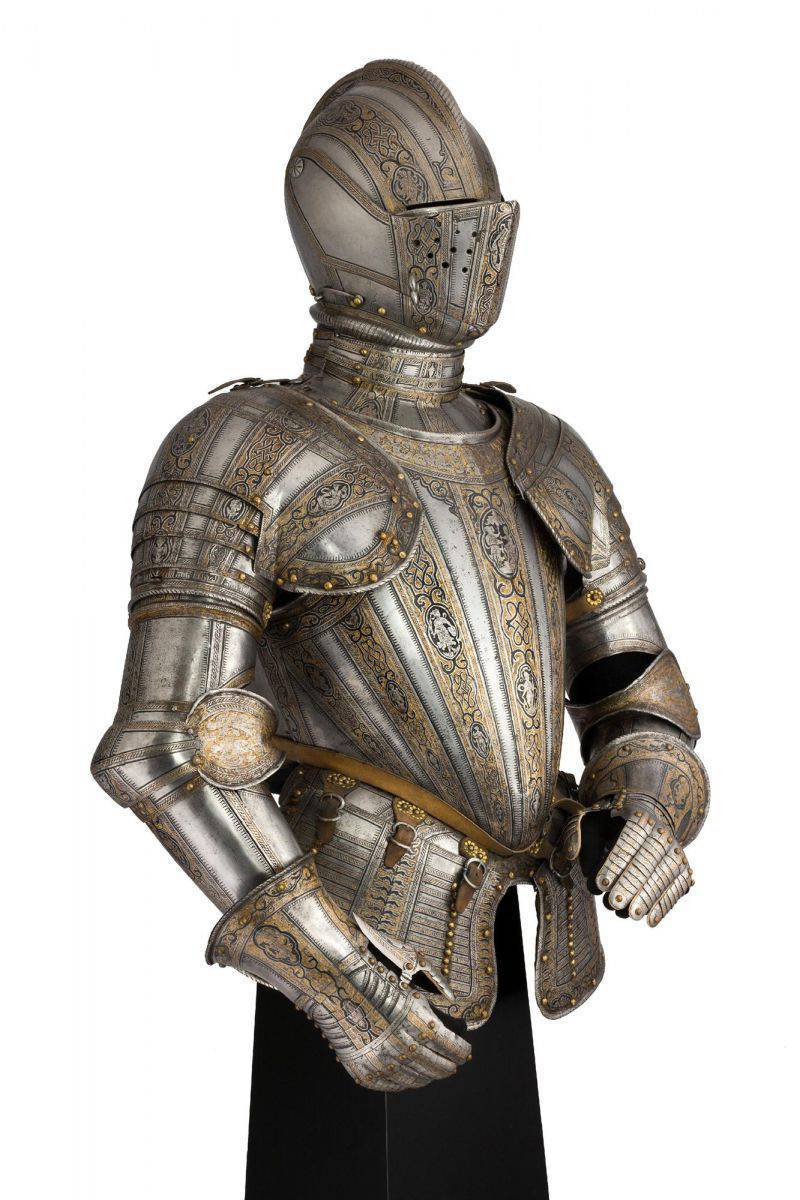
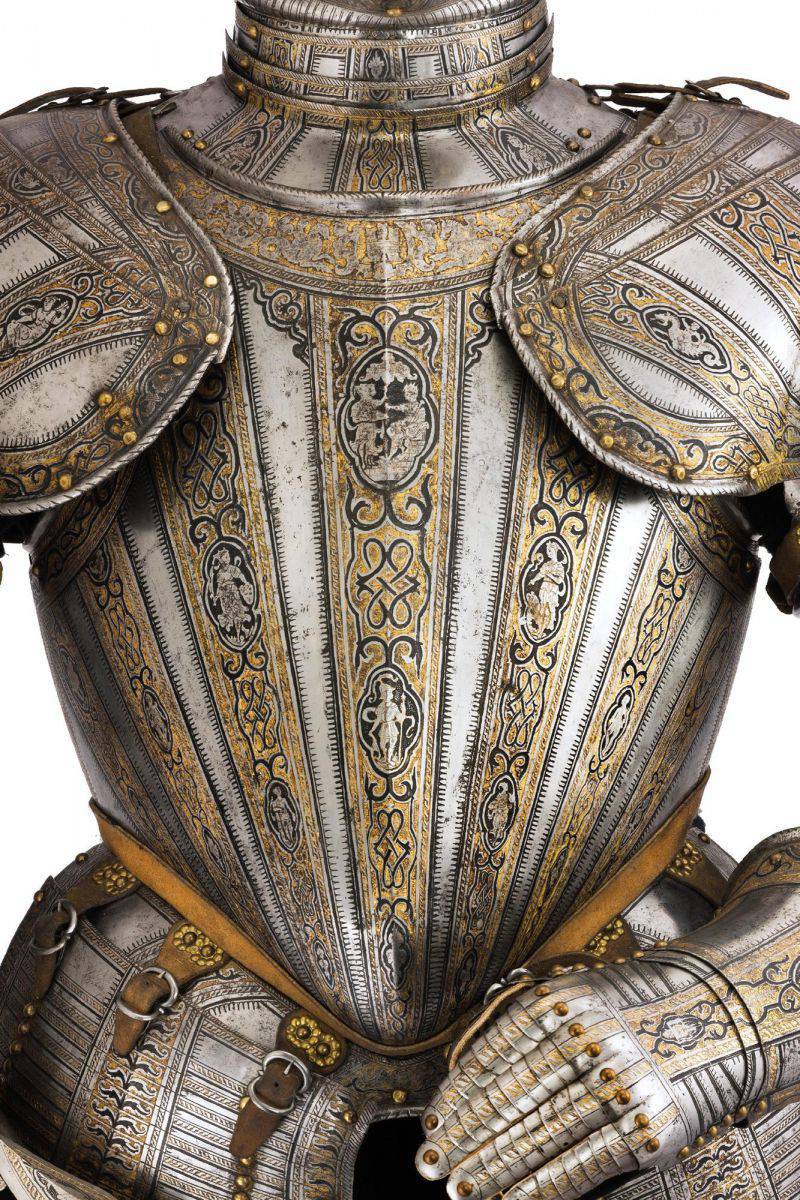
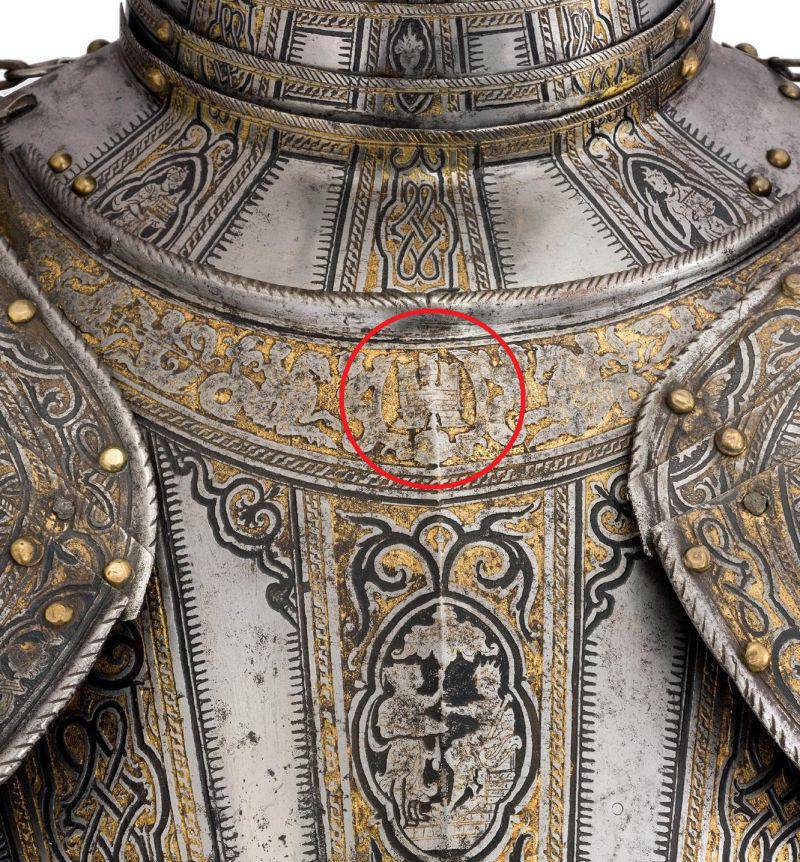
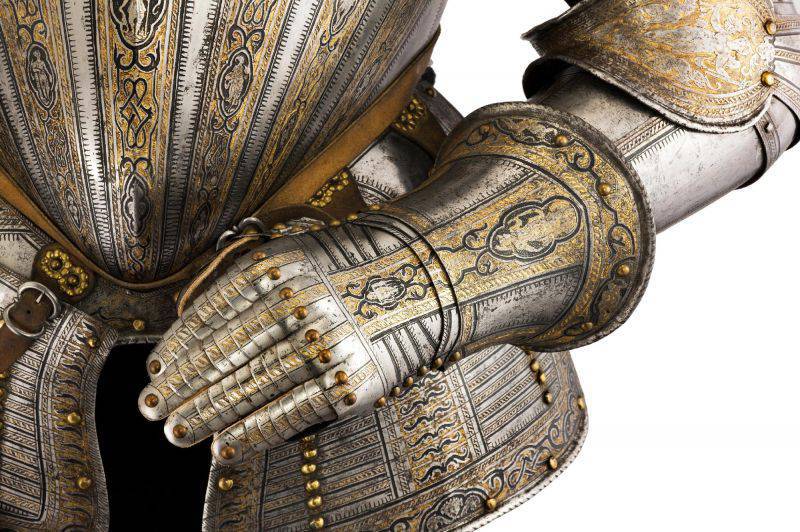
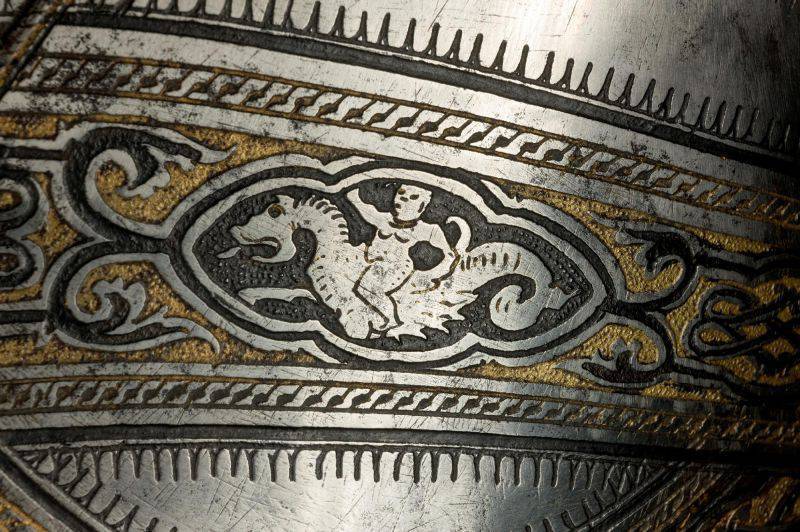
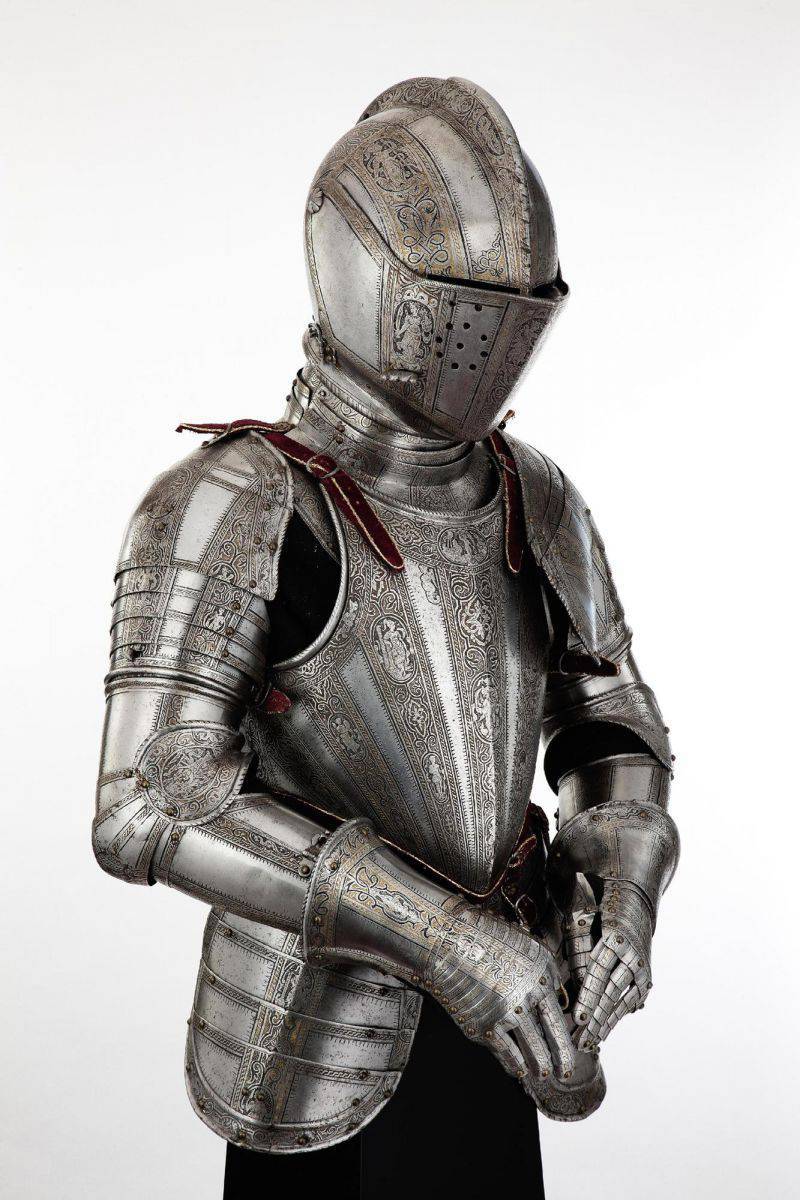
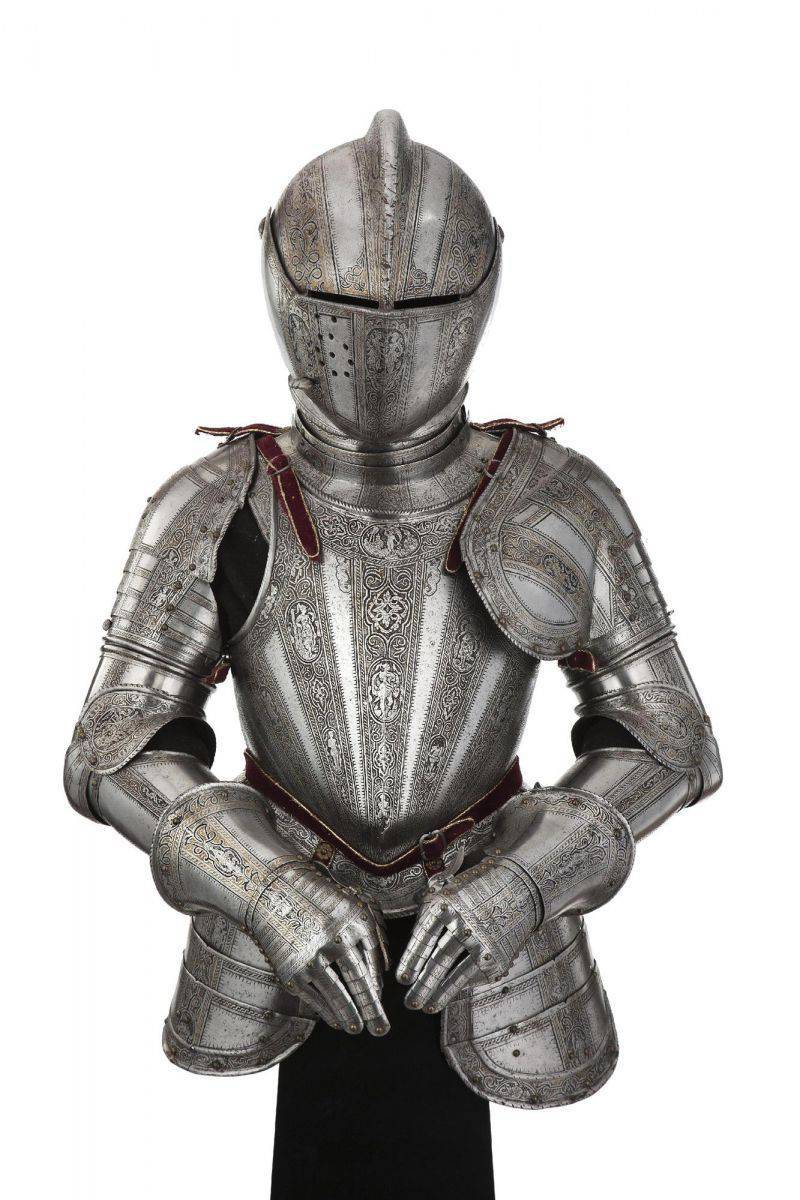
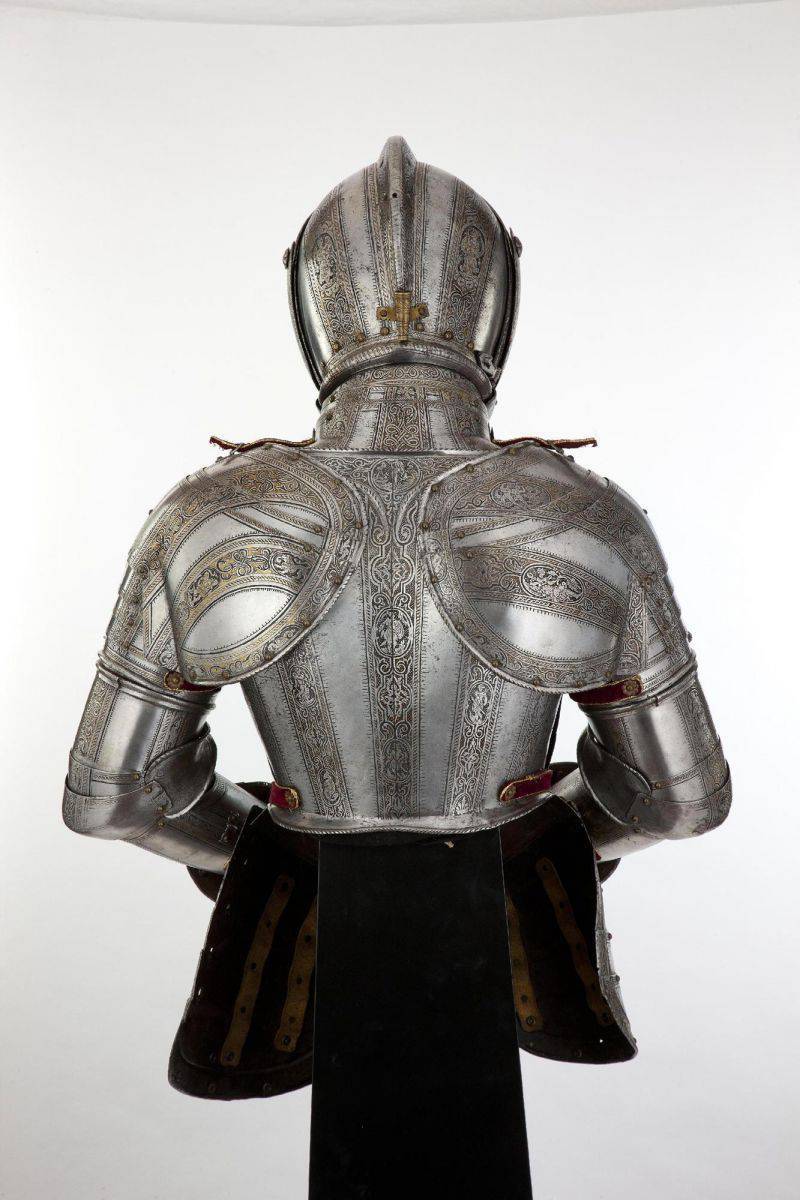
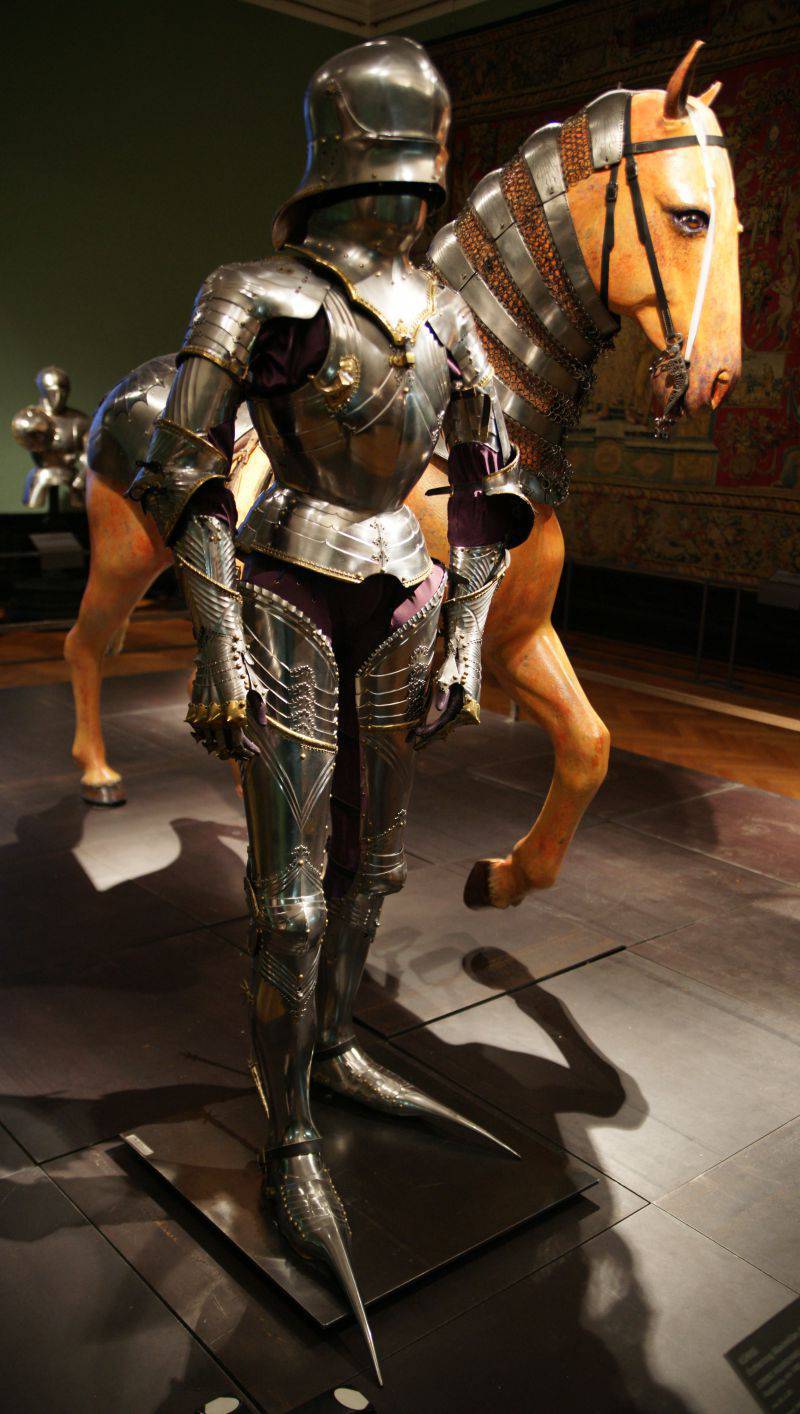
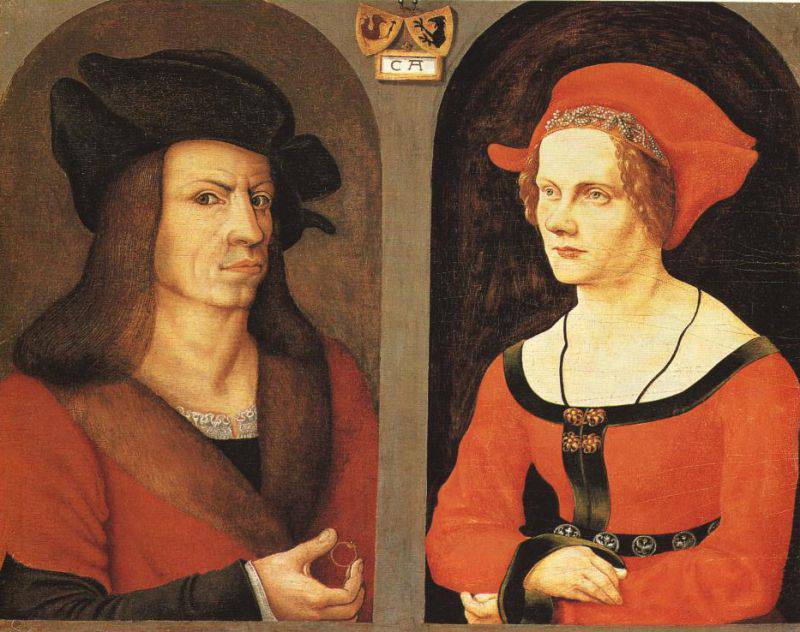
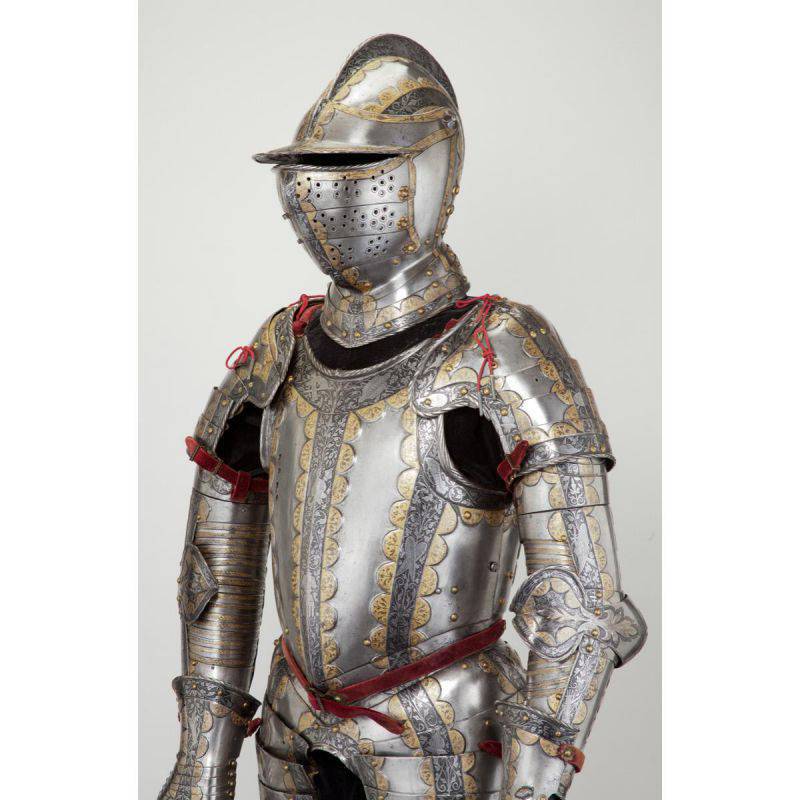
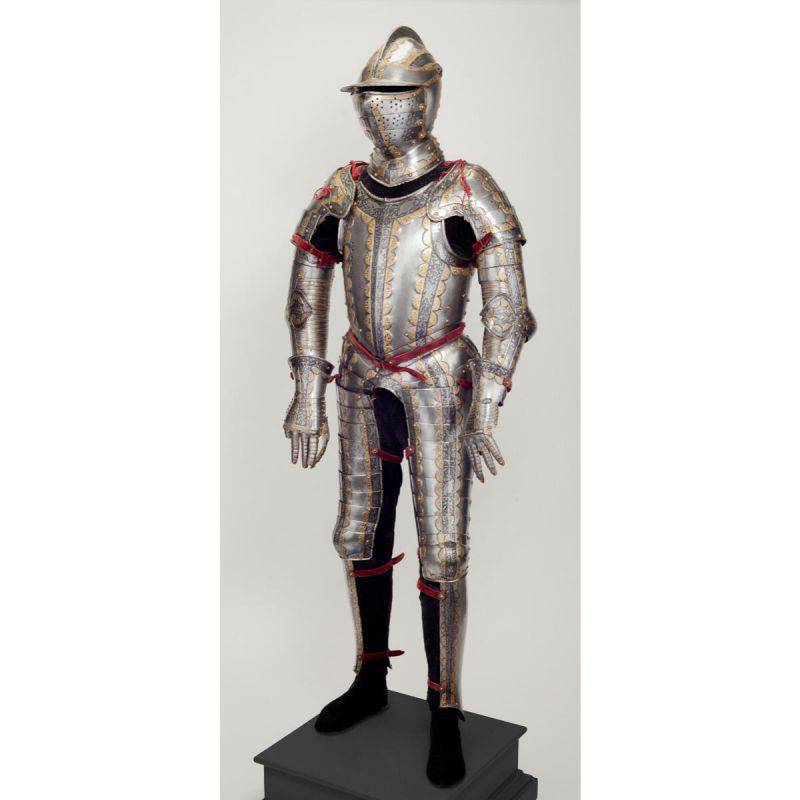
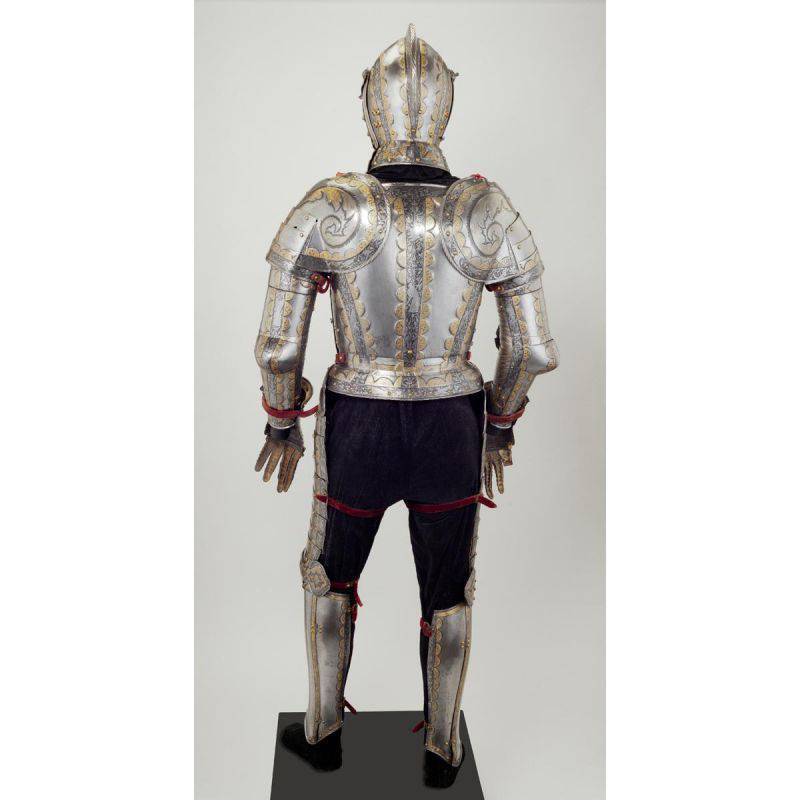
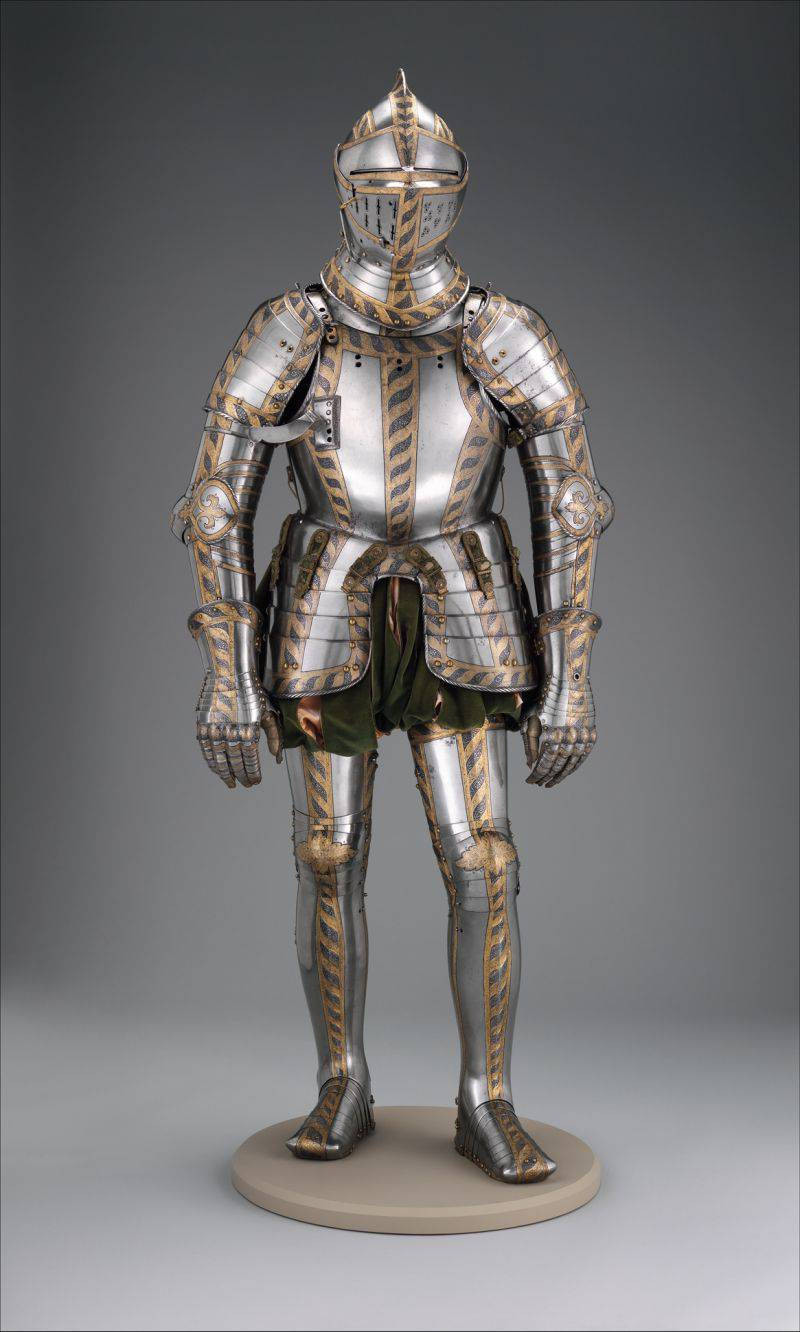
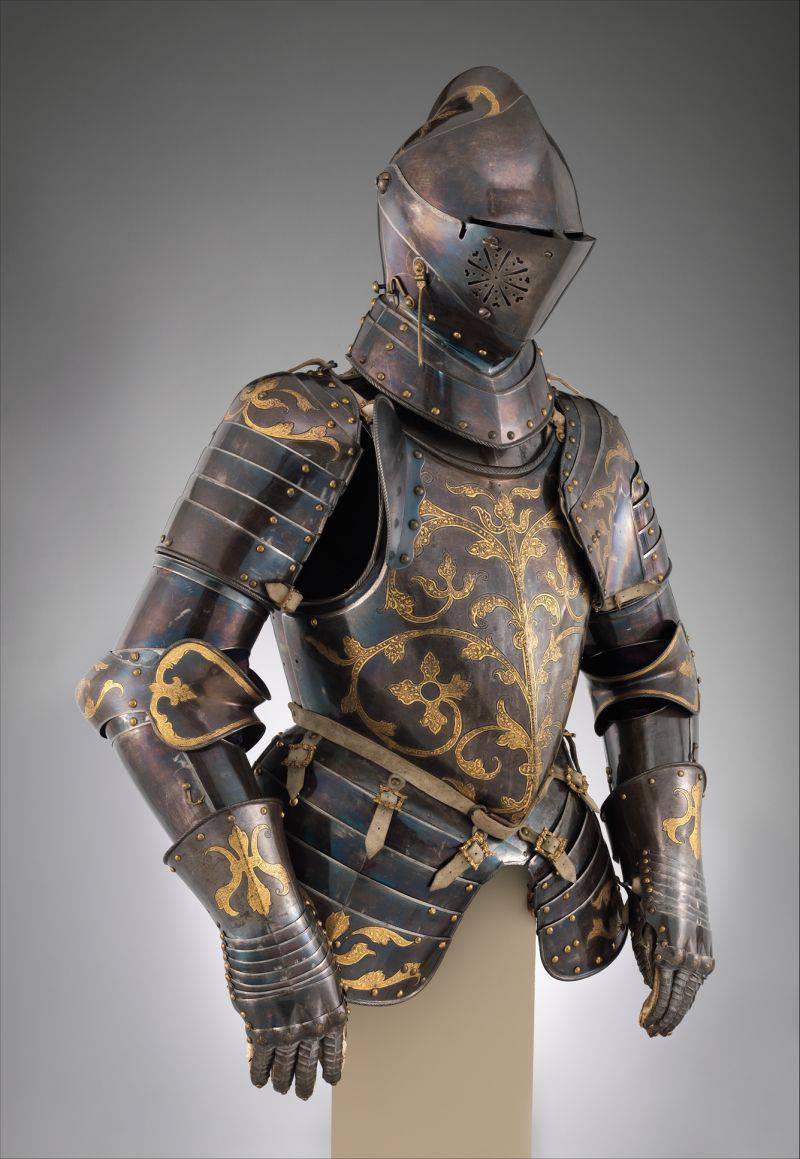
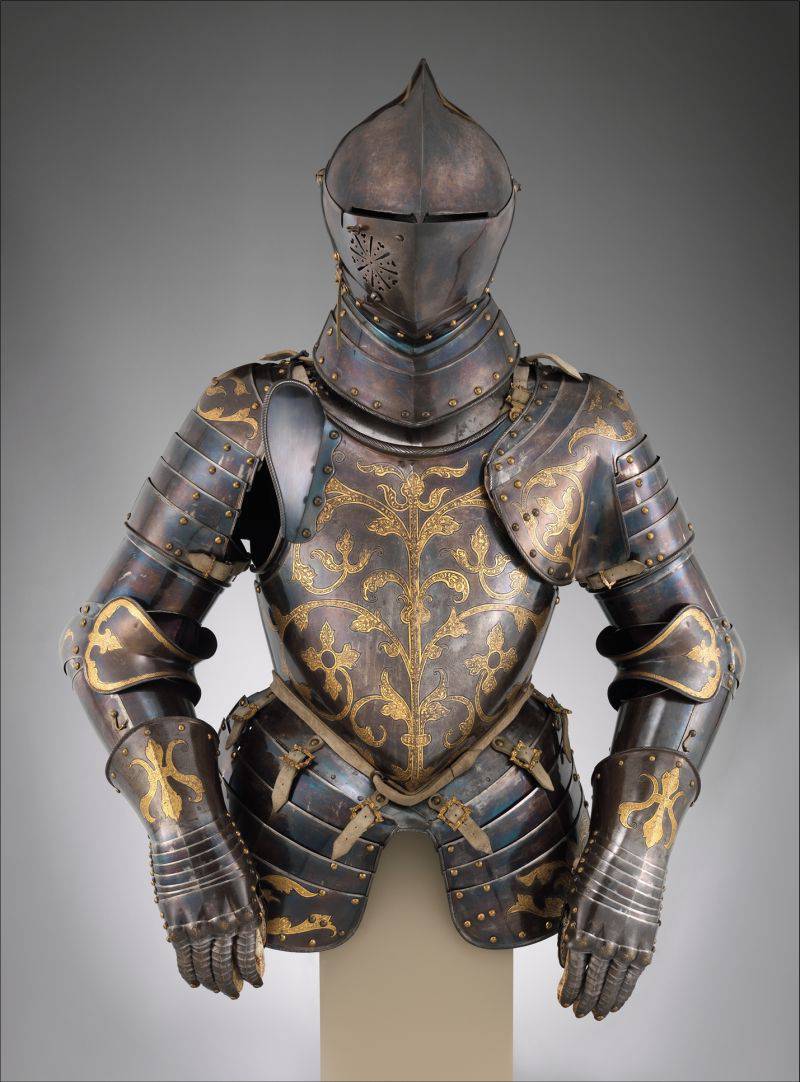
Information